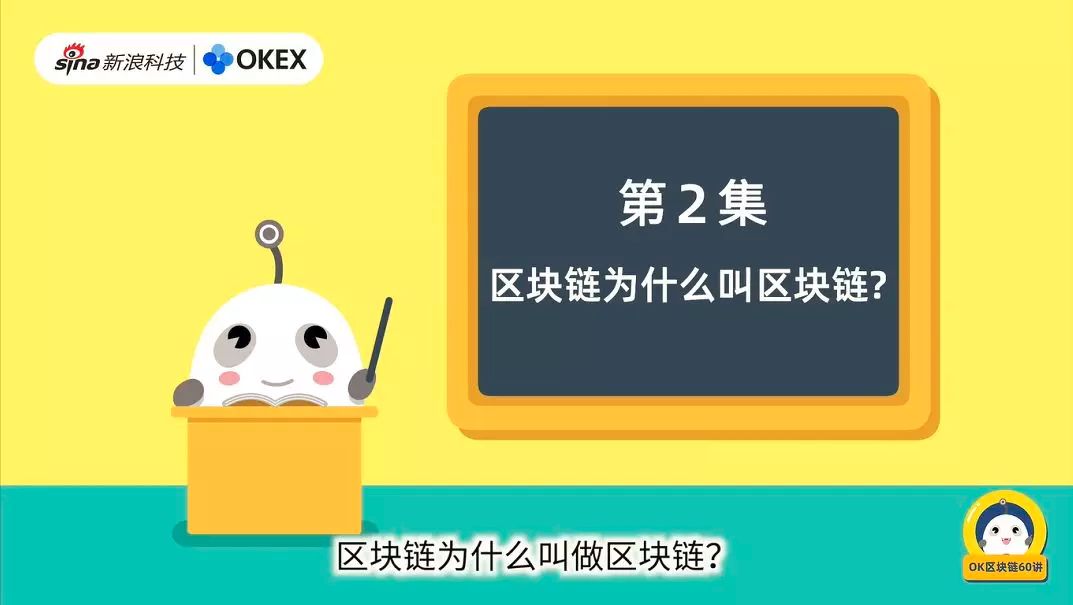Video | OK Blockchain 60: Why is Blockchain called Blockchain?
In 2008, the global financial crisis broke out. On October 31, "Satoshi Nakamoto" published a paper called "A Peer-to-Peer Electronic Cash System" describing the working mode of Bitcoin.
On January 3, 2009, Satoshi Nakamoto dug up the first bitcoins on a small server in Helsinki, Finland, marking the birth of bitcoin.
On May 22, 2010, a programmer spent 10,000 bitcoins to buy two pizzas, giving the price of bitcoin for the first time.
As the first application of blockchain, Bitcoin is well known. However, as the underlying technology of the blockchain, everyone must not understand it. Why should the blockchain be called a blockchain?
- 7 Key construction projects in provinces and cities in 2020 involve billions of funds from the blockchain to help industrial development
- Video: Lecture on OK Blockchain 60-Features of Blockchain: Decentralization
- Open Class | How to achieve authenticity in an information-pollution environment?

To understand this problem, it is necessary to talk about the data structure of the blockchain. The reason why the blockchain is called the blockchain is that it is composed of data blocks and "chains". The data blocks formed by data upload will be linked together in chronological order to form a chain structure.
In simple terms, we all know that the Internet world is a huge network database, and the blockchain is also an immutable database. During the data upload process, the data will be packaged together to form individual data blocks. It's a bit like a factory packing fruit into glass bottles and producing canned fruit. The packaged data block has another scientific name called "block".

A block is the basic storage unit of this database. It records all transaction information between nodes involved in maintaining the network within a certain period of time. A series of transactions generated by each accounting will be packaged into a block. For example, when Bitcoin was first born, on January 3, 2009, Satoshi Nakamoto established the first block, also called the founding block, on a small server in Helsinki, Finland, and then dug out the first Batch Bitcoin.
Since it is a database, you need to verify and protect the data inside. Therefore, the database of the blockchain links each block in a cryptographic manner through chronological order, thereby making the entire database more secure and credible.
The specific cryptographic method used here is the hash algorithm, also known as the hash function, which can be used to calculate something called a hash value. Each block must be attached with the hash value of a block at the beginning to achieve association.
The characteristic of this function is that as long as the input data changes, even if only a small character is changed, the entire hash value will be unrecognizable, which means that once you want to maliciously tamper with the data in the previous block, the subsequent hash The value will change and be discovered by others to ensure the security of the database.

When all blocks are connected by a hash algorithm, one by one, like an iron chain, a chain of data structure is formed. Because of the chain structure of the blockchain, it was originally called the “chain of blocks” in the original English white paper of Bitcoin, that is, a chain composed of blocks. Later, in the earliest Chinese translation of the Bitcoin white paper, Translate it into a blockchain, and it will also be called a blockchain over time.
Blockchain as a new technology, although the name is a little different, but its prospects are very broad, because of its special chain structure, this technology has the characteristics of data tampering and traceability. These characteristics are widely loved by financial institutions. For example, when banks do amount settlement and information entry, the characteristics of the blockchain that cannot be tampered with and traceable can make the records tamper-resistant and can be traced back to each fund. Flow direction, thereby making financial transactions more secure and credible.
Therefore, blockchain is inherently complementary to finance. Finance provides application scenarios for blockchain, and blockchain provides a safe soil for finance. In addition, in today's information Internet era, there are indeed a lot of information security problems, leading to the increasing cost of trust between users and users, and between users and enterprises. The characteristics of the blockchain provide technical support for solving these trust issues. If the Internet has led the revolution in information transfer, then maybe one day, the blockchain will lead the revolution of data trust like the Internet, let us look forward to it!

Thank you Mentor Meng Yan for your help and support in this episode.
We will continue to update Blocking; if you have any questions or suggestions, please contact us!
Was this article helpful?
93 out of 132 found this helpful
Related articles
- How much do you know about the history of Ethereum? Here is a brief history
- Global blockchain status: Asia is the most competitive, and Africa is the largest target market?
- Observation | Xiong'an Blockchain's 3rd Anniversary: From the first tree with an "identity card" to the official opening of the blockchain laboratory
- Yao Qian: Three major scenarios and solutions in which blockchain may be applied to central bank digital currency
- Video | Chen Xiaohua: Two attributes, six dimensions, and one center of the blockchain
- The application prospect of blockchain technology in sudden public safety incidents: how to realize "digital city governance" and "digital epidemic prevention"?
- Fragmented identity data, reshaped on the blockchain






